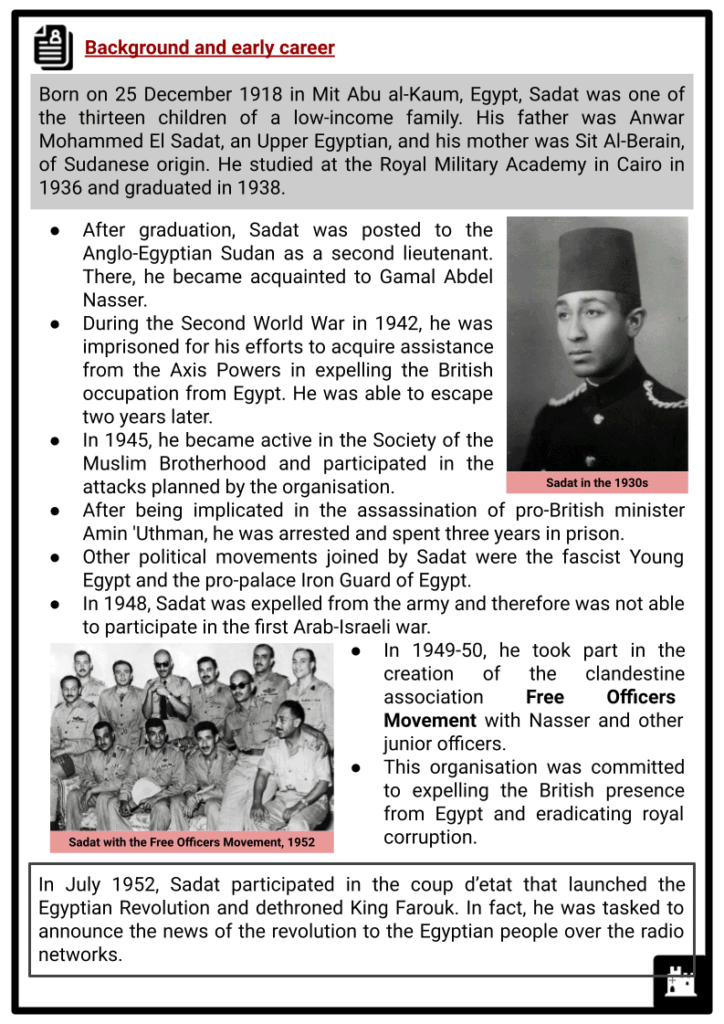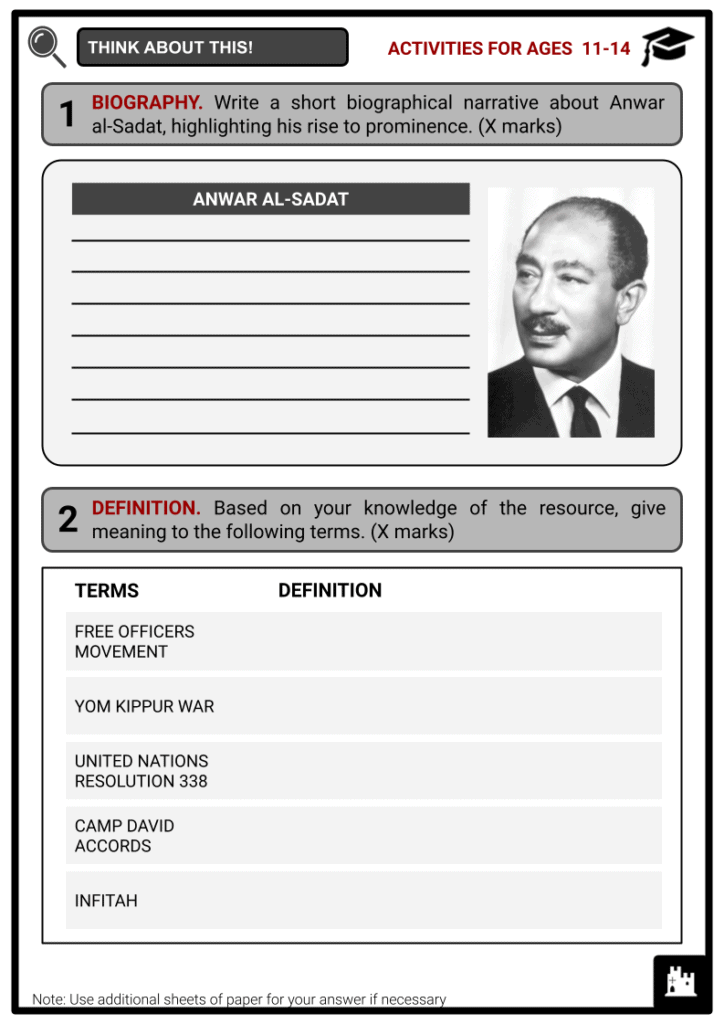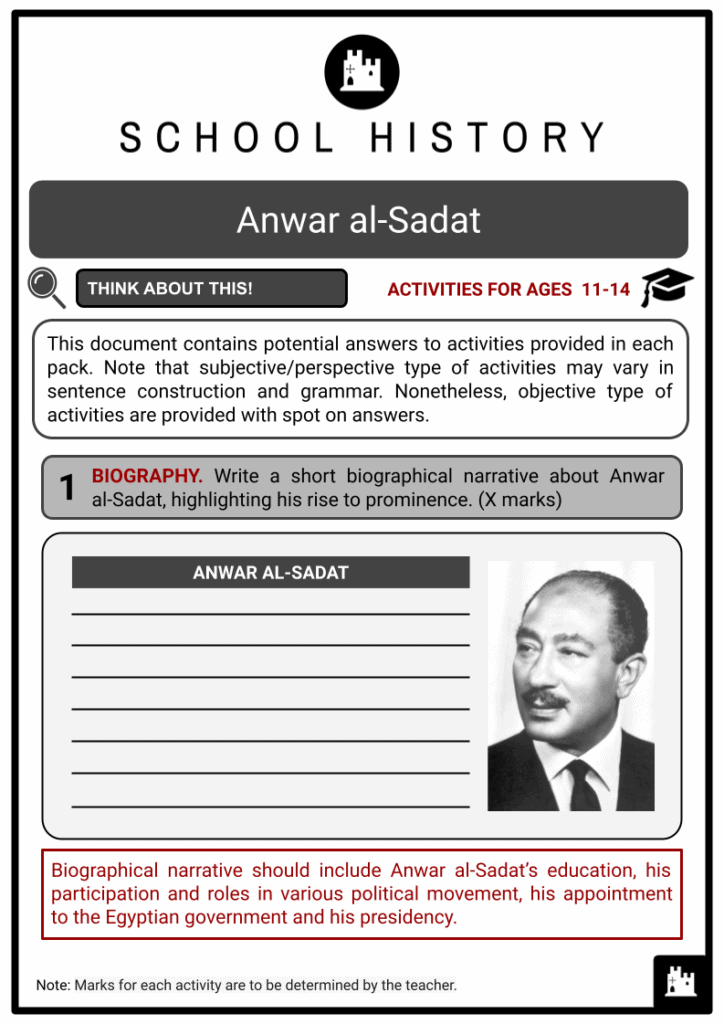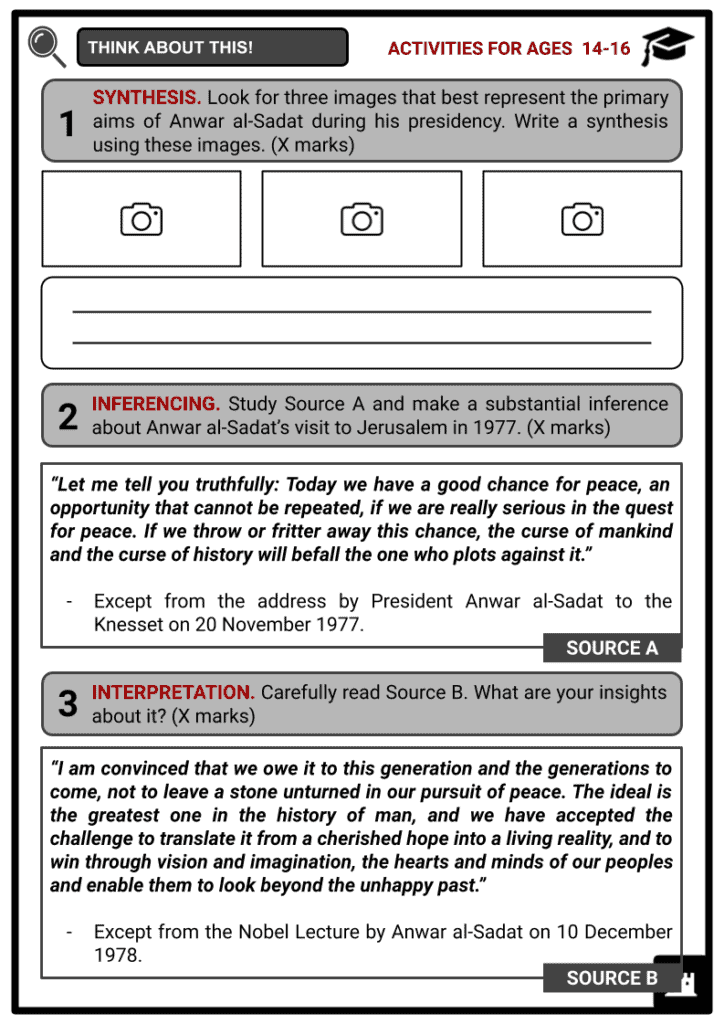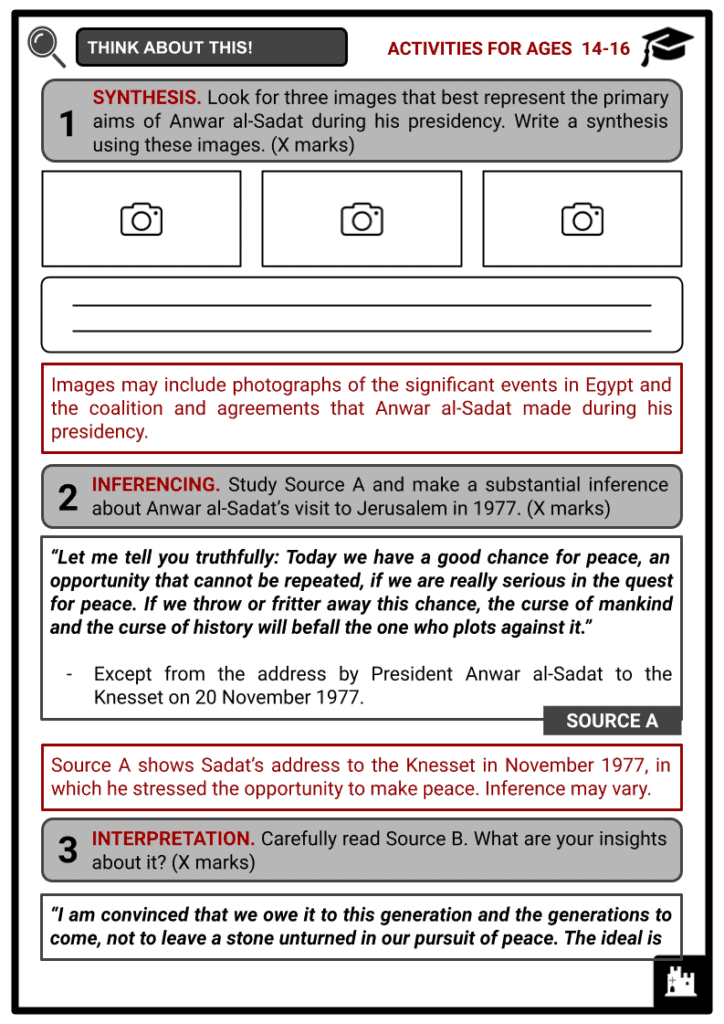Download Anwar al-Sadat Worksheets
Do you want to save dozens of hours in time? Get your evenings and weekends back? Be able to teach Anwar al-Sadat to your students?
Our worksheet bundle includes a fact file and printable worksheets and student activities. Perfect for both the classroom and homeschooling!
Summary
- Background and early career
- Political career
- Assassination
Key Facts And Information
Let’s find out more about Anwar al-Sadat!
- Anwar al-Sadat was the third President of Egypt from October 1970 until his assassination in October 1981. Before he entered politics, he served in the military and was involved in many political movements that sought to expel British occupation from Egypt. Through his close relationship with Gamal Abdel Nasser, he assumed various ministerial positions before pursuing the highest government position in the Republic. As President, he introduced greater political freedom and a new economic policy that led to economic instability. He was awarded the Nobel Peace Prize in 1978 for entering into peace agreements with Israel known as the Camp David Accords.
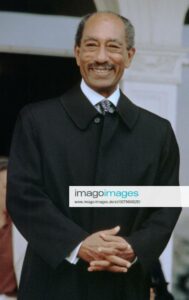
Background and Early Career
- Born on 25 December 1918 in Mit Abu al-Kaum, Egypt, Sadat was one of the thirteen children of a low-income family. His father was Anwar Mohammed El Sadat, an Upper Egyptian, and his mother was Sit Al-Berain, of Sudanese origin. He studied at the Royal Military Academy in Cairo in 1936 and graduated in 1938.
- After graduation, Sadat was posted to the Anglo-Egyptian Sudan as a second lieutenant. There, he became acquainted to Gamal Abdel Nasser.
- During the Second World War in 1942, he was imprisoned for his efforts to acquire assistance from the Axis Powers in expelling the British occupation from Egypt. He was able to escape two years later.
- In 1945, he became active in the Society of the Muslim Brotherhood and participated in the attacks planned by the organisation.
- After being implicated in the assassination of pro-British minister Amin 'Uthman, he was arrested and spent three years in prison.
- Other political movements joined by Sadat were the fascist Young Egypt and the pro-palace Iron Guard of Egypt.
- In 1948, Sadat was expelled from the army and therefore was not able to participate in the first Arab-Israeli war.
- In 1949-50, he took part in the creation of the clandestine association Free Officers Movement with Nasser and other junior officers.
- This organisation was committed to expelling the British presence from Egypt and eradicating royal corruption.
- In July 1952, Sadat participated in the coup d’etat that launched the Egyptian Revolution and dethroned King Farouk. In fact, he was tasked to announce the news of the revolution to the Egyptian people over the radio networks.
Political Career
- Following the military coup against the Egyptian monarchy, Sadat’s career in politics was launched. In 1954, Sadat was appointed minister of State during Nasser's premiership. In 1956, he supported Nasser’s election to the presidency. He held several high offices in the Egyptian government afterward.
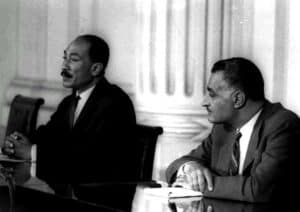
- In 1959, Sadat assumed the position of Secretary to the National Union.
- From 1960 to 1968, he became president of the National Assembly.
- He was then appointed Vice President by President Nasser in December 1969.
- He would later condemn Nasser’s policy, accusing him of lacking a clear vision for Egypt’s evolution and the well-being of its citizens.
- On 28 September 1970, after the death of Nasser, he became acting President of the Republic.
- He was elected to the position for good in a nationwide vote on 15 October, becoming the third President of Egypt.
- Whilst his presidency was widely expected to be short-lived, he surprised everyone with a series of intelligent political moves by which he was able to retain the presidency and emerge as a leader in his own right.
- Determined to reorient the government’s policy towards capitalism, he announced his Corrective Revolution in May 1971.
- He purged the government, as well as the political and security establishments of the most enthusiastic Nasserists.
- Moreover, he encouraged the emergence of an Islamist movement, which was a reversal of Nasser's policy.
- He gave the Islamists autonomy in return for political support.
- With regard to foreign affairs, he expelled thousands of Soviet technicians and advisers from the country in 1972, believing that the Soviet Union provided him limited support in Egypt’s continuing confrontation with Israel.
- Furthermore, he began peace talks with Israel almost immediately, declaring his willingness to reach a peace settlement if Israel were to return the Sinai Peninsula.
- After Israel declined Sadat's terms, he formed a military coalition with Syria to regain the territory, which ignited the Yom Kippur War of October 1973.
- Sadat developed a military manoeuvre that put the Egyptian army in a favourable position without arousing Israeli suspicions.
- Meanwhile, he ensured sufficient military and logistical support, without his allies becoming aware of the imminent attack.
- On the Day of Atonement on 6 October, hostilities began with Egypt's Operation Badr in conjunction with the Syrian assault on the Golan Heights.
- Despite the clear military superiority of the Israel Defence Forces, the Egyptian forces were determined to take back the territories lost in 1967.
- Although Sadat's coup was successful, both Egyptians and Syrians could not contain the Israeli counter-attacks.
- Finally, a ceasefire was negotiated by the United States and the Soviet Union, and proposed by the United Nations Security Council.
- With the UN Resolution 338, all parties were urged to begin negotiations with an aim to establish peace in the Middle East.
- The general feeling that prevailed in the Arab world, and especially in Egypt, was that of a great victory.
- The Egyptians were again present in Sinai, having been expelled in 1967.
- Sadat took advantage of this situation and became, after his reconciliation with the Americans at the end of the Yom Kippur War, a privileged interlocutor in the region.
- He emerged with added respect and prestige as the first Arab leader to have actually retaken some territory from Israel.
- In November 1977, Sadat became the first Arab leader to pay an official visit to Israel.
- He met Israeli Prime Minister Menachem Begin and spoke before the Knesset (Israeli Parliament) in Jerusalem.
- He made this visit after being invited by Begin and sought a permanent peace agreement.
- Many authorities in the Arab world reacted very unfavourably in regard to his visit, as many considered Israel a rogue state and a symbol of imperialism.
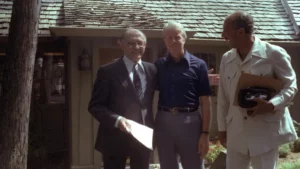
- On 17 September 1978, the Camp David Accords were signed by Sadat, Begin and the US President Jimmy Carter in Washington, D.C.
- These political agreements intended to put an end to the Israeli-Egyptian conflict.
- Both Sadat and Begin were awarded the Nobel Peace Prize in 1978 for making these agreements.
- Finally, on 26 March 1979, Egypt and Israel signed an official peace treaty, which included provisions that the US would provide both countries with military and economic aid.
- Nevertheless, the peace treaty was extremely unpopular in the Arab and Muslim world.
- Sadat's actions were considered a betrayal of Nasser’s pan-Arabism since he had destroyed the possibility of creating a united Arab front.
- On the economic front, Sadat launched the Infitah (openness) policy that aimed to attract foreign investment and promote relations with the US. This led to the rapid growth of a class of new rich people.
- In 1975, there were more than 500 millionaires in Egypt, but more than 40% of the population lived below the poverty line. Moreover, the country accumulated great debt during the years of the Infitah.
- To reduce it, the International Monetary Fund called for the abolition of all commodity subsidies, leading to riots in January 1977.
- The government involved the army, generating an unknown number of victims.
Assassination
- Whilst Sadat’s popularity soared in the West, it fell dramatically in his country due to the internal opposition to the peace treaty, an intensifying economic crisis, and Sadat’s clampdown on the resulting public dissent.
- In September 1981, Sadat launched a highly unpopular offensive against intellectuals and activists.
- Communists, Nasserists, feminists, Islamists, university professors, journalists and members of student groups were imprisoned. He also detained the Coptic Pope and other Coptic clergy.
- All non-government press was banned as well. More than 1,500 people were arrested.
- However, the roundup missed a Jihad cell in the military, from which came Sadat's assassin that October.
- On 6 October, a month after the wave of arrests, Sadat was assassinated during the military parade in Cairo commemorating Egypt's crossing of the Suez Canal.
- He was killed by members of the army belonging to the Egyptian Islamic Jihad organisation. They were opposed to Sadat’s negotiations with Israel and his use of force.
- In addition to Sadat, eleven others were killed and twenty-eight were wounded.
- Sadat was standing to receive his salute when Khalid Islambouli threw a smoke grenade.
- The three other conspirators then left a truck and threw other grenades.
- Islambouli fired the Egyptian president several times, assisted by other attackers. He was later found guilty and was executed in April 1982.
- Sadat was succeeded by Vice President Hosni Mubarak.
- A record number of dignitaries from around the world attended Sadat’s funeral, including the three former US Presidents Gerald Ford, Jimmy Carter and Richard Nixon. On the contrary, Sudan's President Gaafar Nimeiry was the only Arab head of state to attend the funeral.
- Sadat was buried in a soldier memorial in Cairo on 10 October 1981.
Image Sources
https://www.imago-images.com/bild/st/0078668250/w.jpg
https://upload.wikimedia.org/wikipedia/commons/8/8a/Nasser_and_Sadat_in_National_Assembly.JPG
https://www.history.com/.image/c_limit%2Ccs_srgb%2Cq_auto:good%2Cw_700/MTY3NzY4OTM4MjM3Nzk3Nzkw/jimmy-carter-middle-east-gettyimages-85595001.webp


